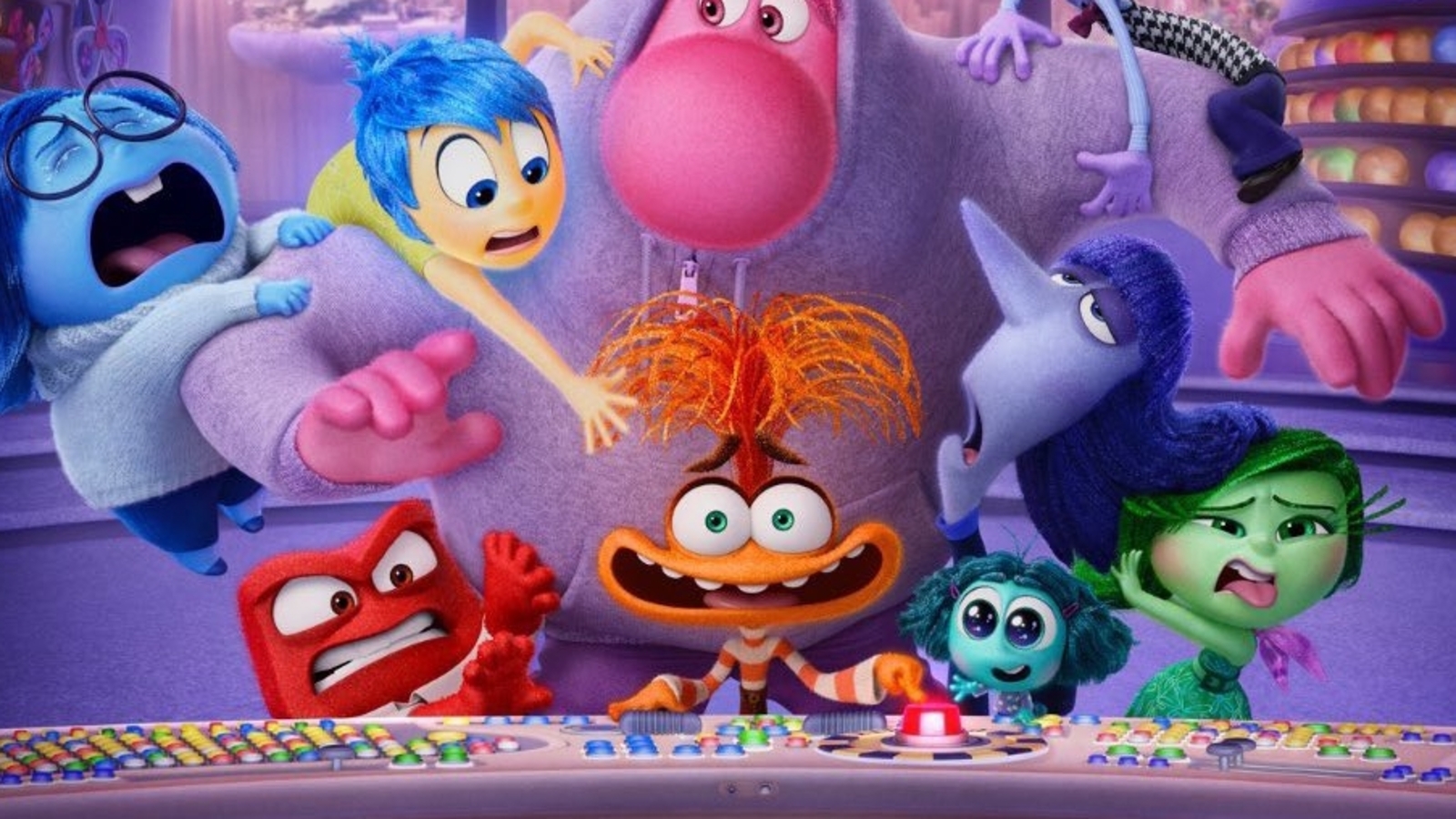Inside Out 2 Movie Review: Pete Docter’s 2015 cult Pixar movie ends with Joy saying, “Riley is 12 now. What could go wrong?” Everything plays out as we find it in the sequel released nine years later. As Riley approaches puberty, four new emotions emerge, meaning that Joy, Sadness, Fear, Anger and Disgust have to share room with Anxiety, Jealousy, Embarrassment and Boredom. That means more characters, more colours and more chaos. So the sequel gets nerdier, more imaginative and a little more mature and emotional.
(Also Read – Chandu Champion review: Kartik Aaryan delivers a stellar performance in an emotional, inspiring underdog story)
Directed by Kelsey Mann, and co-written by her (story), Meg LeFauve and Dave Holstein (screenplay), Inside Out 2 picks up where the first part left off. Everything is going well for Riley until she goes to an ice-skating team selection camp, which coincides with the arrival of puberty. The emotions of puberty, led by Anxiety, hijack the control room, and hide the five primary emotions in a jar, which is sent to the Vault, a remote, dark prison where Riley hides all her secrets. Joey and company must return to the control room to save Riley from the P-word crawling out from under her bed.
The Inside Out franchise’s most admirable personality trait is that it combines the fantastical adventure of a Pixar film with the relatable, reflective nature of a maturing puberty story. The childish preoccupation with fantasy is juxtaposed with the bitter-sweet inevitability of growing up. Every emotion, every feeling has a color, a personality trait. For example, the new entrants – Anxiety (orange, fountain ponytail); Jealousy (turquoise, the youngest); Embarrassment (pink, hidden under a hoodie, sweaty palms), and Boredom (blue, always slouched). There’s even Nostalgia (beige, old woman drinking tea), who is relegated to the backstage and is said to only return 10 years later. “After two graduations and a best friend’s wedding.”
While these new characters add more color and chaos, the old characters have plenty to do as well. After being detained in the Vault, the journey that begins inside their minds is that of a stupid kid lost in a candy store. It begins with the introduction of three characters in the Vault itself – a cartoon character who was (or, rather, still is) Riley’s guilty pleasure; a secret crush in the form of a samurai video game character who speaks eloquently (jokingly referring to Hatred as a “hateful person”), but is “cursed with the weak power” to drop his sword and turn into a rolling ball; and a giant beast described as “Riley’s deepest and darkest secret” who refuses to leave the Vault even after apparently being possessed.
Then there is the stream of consciousness, which was introduced in the first part – a literal stream in which Riley’s thoughts float. This is woven more skillfully in the next part as the stream becomes contaminated with pizza and other junk food when Riley is hungry and broccoli when she is frustrated. These are used by Joey and company as vessels to set off on their adventures. But beware of the Sir-Chasm – a tectonic chasm created in Riley by boredom’s introduction of sarcasm. Like most humans, Riley’s mind doesn’t take sarcasm well – and explodes in a destructive streak. Then there is another cerebral disaster – brainstorming,

The other end of the tube is the “back of the brain,” where Joey dumps every negative memory at the risk of it becoming core memory. It’s designed as a long sloping drain connecting their house to the backyard. He has no idea that every dumped piece ends up back at the front if not properly processed or recycled. And then there are the beliefs, the tiny plants in the control room, planted using memories as seeds that lead to string-like roots. Inside Out 2’s writers took years to develop this ingenious worldbuilding with the help of psychologists and animators. They used their brains to shape the imagination and their imagination to shape the brain.
There’s enough wisdom for adults and enough imagination for kids. But Inside Out 2 also hits the sweet spot between the two. What connects kids on the threshold of puberty and adults on the cusp of a midlife crisis? Emotions. The first part showed that joy and sadness need to go hand in hand for a healthy mind. The sequel gives sadness a chance to be the unsung hero, and brings Joy aboard as its emotional anchor. When pushed to the sidelines by anxiety, Joy faces an existential crisis. She denies it at first, and then says heartbreakingly that growing up means “feeling less joy.” But the following series of events highlights another valuable mental health lesson that applies across all ages – life or growing up is not a seamless monolith.
